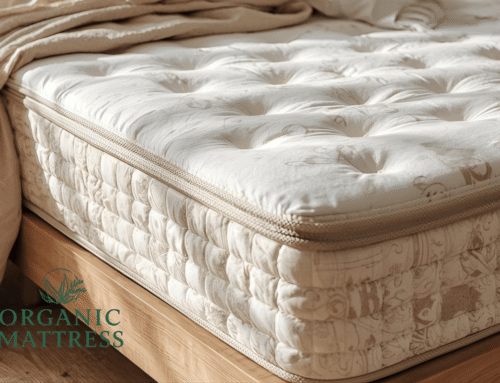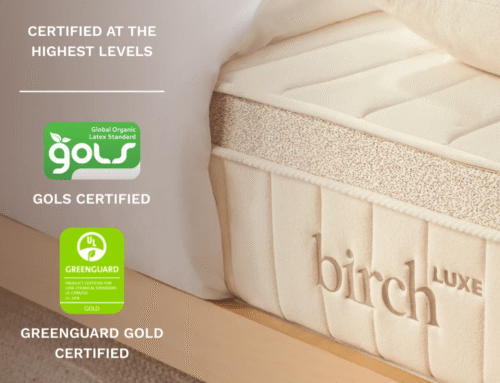Ever wondered what’s really inside your mattress? While it might feel comfortable at first, we often don’t think about the materials and layers that make it up. Some mattresses feel plush right away but lose their comfort quickly, while others might seem firmer at first yet offer lasting support. Understanding the layers helps when it’s time to choose a new one.
A mattress usually consists of materials like foam, coils, and sometimes natural fibers. Foam may feel soft, but the quality and thickness determine how long it lasts. Coils provide more support, especially for those who prefer something firmer. Familiarity with these layers gives you a clearer idea of how long your mattress will last and the type of support it offers.
Knowing what’s inside helps make a more informed decision, whether you prefer something soft or firm. Choosing a mattress that suits your needs doesn’t just mean comfort; durability is important too. Understanding the materials behind the comfort can save money in the long run and lead to better sleep. The mattress, its invention, and its anatomy all play crucial roles in how we experience sleep. Mattresses are often made with a combination of various materials like foam, coils, and natural fibers, and many are produced in the USA. These materials contribute to the overall comfort and longevity of the mattress.
Key Takeaways
- Mattresses use layers like memory foam, coils, latex, and natural fibers. Each one adds distinct comfort, support, or cooling benefits depending on your needs.
- Foam feels soft and contours to your body, while innerspring coils offer bounce and increase airflow. Hybrids combine both to create a balanced and adaptable feel.
- Natural materials such as latex, wool, and organic cotton stay cooler and cleaner. They also suit allergy-prone sleepers and those who prioritize eco-friendly options.
- Comfort layers relieve pressure points, and the support core keeps your spine aligned. This reduces stiffness and helps improve sleep quality over time.
- A mattress that sags, causes allergies, or leaves you sore likely needs replacing, especially after 7 to 10 years of regular use.
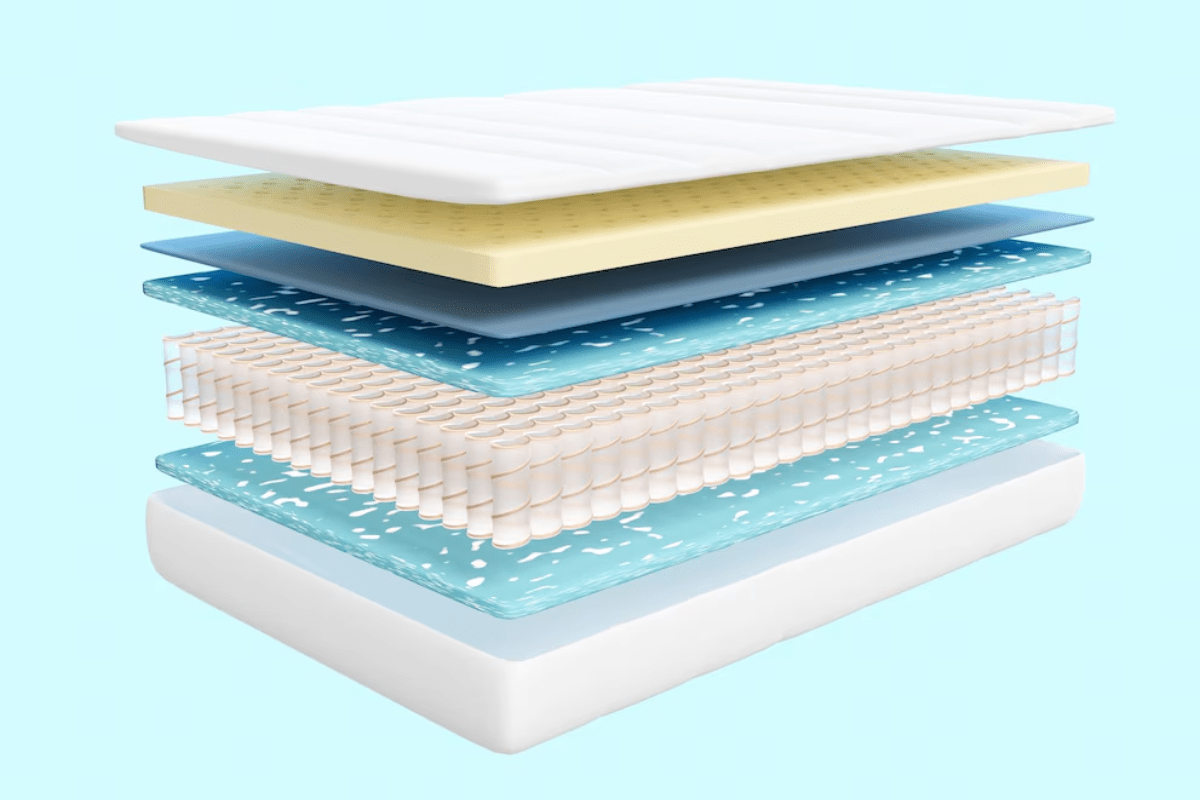
Mattress Comfort Layers
The comfort layer of your mattress is the part that first comes into contact with your body. It’s designed to offer a balance of softness and pressure relief, so you can relax without putting strain on your shoulders or hips. It should feel just cushioned enough, without being too firm or too soft.
Foams like memory foam, polyfoam, or latex are commonly used here, though natural fibers like wool or cotton are also options. Softer mattresses usually have thicker comfort layers, while firmer ones keep them thinner. Natural materials tend to be cooler and more breathable, which is great if you often sleep hot. While comfort layers are essential for relaxation, they don’t support your spine. That’s the role of the support core, which we’ll dive into next.
If your mattress no longer provides the same level of comfort or support, it may be time to replace it. Understanding the signs that you need a new mattress and how often you should replace it can help ensure you’re getting the best sleep experience.
Mattress Support Cores
The support core is where a mattress truly delivers. It’s the part that keeps your spine aligned while you sleep to ensure you wake up feeling rested instead of stiff. A solid support core prevents your body from sinking too deeply, which means no more waking up with aches or discomfort.
Different support cores have various benefits. Innerspring coils, for instance, provide bounce and improve airflow, so they’re ideal for those who enjoy a little lift. High-density foam offers firm, even support, especially in all-foam mattresses, which makes it a good option for solid back support.
Latex cores combine support with some bounce and offer a comfortable balance between stability and comfort. Some specialty beds come with air or adjustable bases, which allow you to customize the feel based on your preferences. The materials in the core influence the mattress’ firmness, durability, and overall comfort, so consider what suits you best.
Natural Mattress Materials
You spend a third of your life in bed, so what’s inside your mattress really counts. You’ll probably notice the air feels cleaner and there’s no weird chemical smell hanging around. It’s one of those things you don’t realize you need until you finally sleep on it.
Organic cotton feels soft from day one and doesn’t trap heat like synthetic stuff. Wool helps with airflow, plus it naturally resists flames so you don’t have to deal with extra chemicals. It keeps you cozy without feeling heavy or sticky.
Natural latex gives just the right bounce without sagging over time. You might also come across coconut coir in firmer beds, as it adds solid support without springs. If you deal with allergies or just want a cleaner sleep setup, these materials feel like a better call.
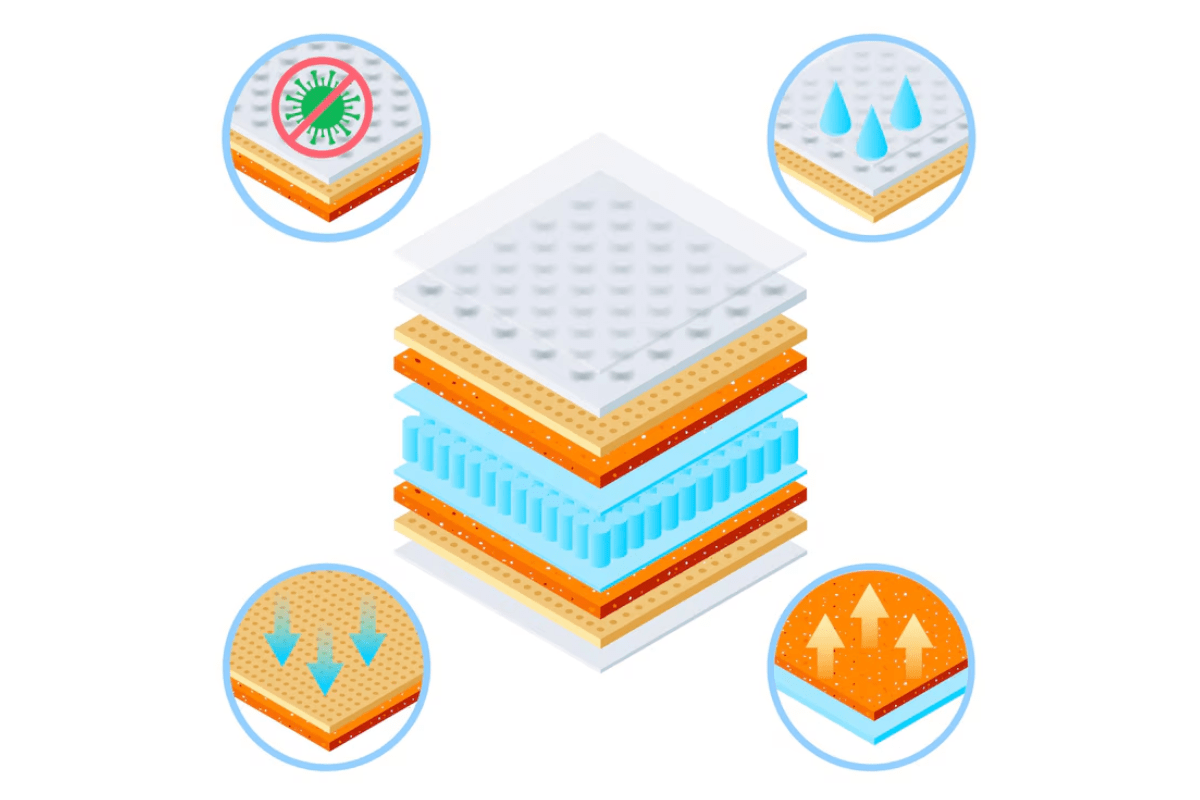
Types Of Mattress Materials
Foam mattresses feel soft and contour to your shape, which helps ease pressure around your hips and shoulders. Memory foam feels more like a hug, though it traps heat unless it’s gel-infused. Polyfoam feels lighter and springier, but it breaks down faster and lacks long-term support.
Latex has a completely different feel. It’s bouncier and cooler to sleep on. If you’re sensitive to chemicals, natural latex makes more sense since it comes from rubber tree sap. Between the two processing types, Dunlop feels denser, while Talalay feels softer and more breathable.
Innerspring mattresses still hold up, especially if you like a firmer and more responsive surface. Pocket coil versions help you sleep more peacefully since they absorb motion and don’t bounce as much. Hybrids give you a nice mix of coils and foam or latex, so you get both support and softness without feeling stuck.
Hybrid Mattress Construction
You sleep better when your bed feels supportive without being stiff. That’s what hybrids do well. They use coils underneath so you don’t feel like you’re sinking too much, but there’s still enough cushioning on top to soften pressure on your hips or shoulders. It feels balanced, especially if you move around at night.
You’ll notice less movement from the other side of the bed, which matters more than you’d think. If you have a partner who tosses a lot in their sleep, hybrids with decent coils and foam really help with that. There’s still some bounce, though, so it won’t feel flat or too stiff.
Most of the hybrids you’ll find have a mix of memory foam or latex layered over pocketed coils. This combo gives a nice balance of contour and push-back, especially if you switch between side and back sleeping. Hybrids are great because they don’t force you to commit to one feel, as they provide that in-between comfort you might be looking for.
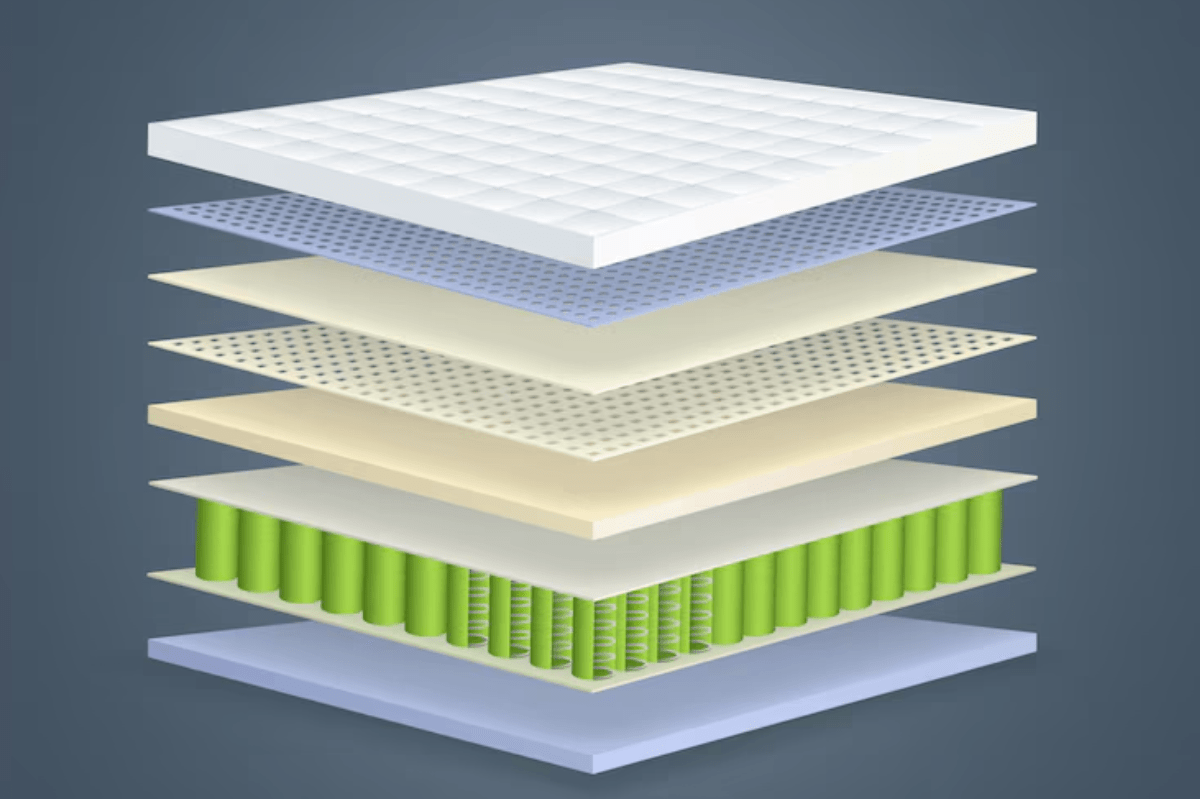
Mattress Foam Types
Understanding mattress foam types is important because they all provide unique feels. Memory foam tends to mold around your body, providing a cradling sensation. However, it can get a bit warm since it tends to retain heat. So, if you’re someone who sleeps hot, it might not always be the best fit.
Gel foam, on the other hand, keeps things cooler with a more breathable design. It also adds a bit of bounce to the mattress, which can make it easier to move around while sleeping. It’s a good middle ground if you’re after comfort without getting too warm.
Polyfoam is typically more affordable, but it doesn’t hold up as well over time. It can lose its shape and support quicker compared to other foam types. Latex foam, though, tends to last much longer. It’s natural, provides solid support, and is often more breathable, making it a great choice if you’re looking for something that balances comfort and longevity. Some mattresses even combine these foams to tailor the sleep experience to your needs.
Innerspring Vs Foam
Choosing between innerspring and foam often depends on the kind of support and feel you prefer. Foam mattresses are quieter and softer, which helps with pressure relief. If you deal with joint or back pain, foam provides comfort by cradling your body without the extra noise.
In contrast, innerspring mattresses are firmer and bouncier. They are more breathable, which benefits those who tend to sleep hot. The coils allow for better air circulation and keep you cooler at night, and their bouncy nature is ideal for anyone who enjoys more movement while sleeping.
Hybrids offer the best of both worlds, combining the softness of foam with the bounce of innersprings. It’s all about finding what works best for you. Foam may make you feel like you’re sinking in, while innerspring offers more lift. You might want to test both in-store to see which one fits your sleep style.
Choosing The Right Mattress Components
Finding the right mattress starts with understanding what works best for your body and sleep habits. Your sleeping position plays a big role in what you need. For example, side sleepers usually require more cushioning to support the hips and shoulders, while back sleepers typically prefer a firmer option for better spinal alignment.
Body weight is also important. Heavier individuals may need a sturdier support core to avoid sinking too much into the mattress, while lighter individuals might find softer options more comfortable. If you tend to sleep hot, it’s helpful to choose materials that promote airflow to keep you cool throughout the night.
Allergies and sensitivities are important too. Some materials, such as memory foam or certain fabrics, may irritate your skin or cause discomfort. It’s worth exploring different combinations, whether you’re testing them in person or reviewing detailed specs online. The goal is always to wake up feeling refreshed and ready for the day.
When considering how to choose a mattress, it’s essential to know when the best time to buy a mattress is and how much you should spend on one. The right timing and budget can help you make a well-informed purchase.

Mattress Materials Comparison
Memory foam is great for those who want a mattress that contours to your body and provides excellent pressure relief. It’s perfect for side sleepers or anyone needing extra cushioning, as it molds to your shape and helps ease joint pain. But it can feel a bit warm sometimes, especially if you’re prone to overheating at night.
Polyfoam is a good option if you’re on a budget but still want something that offers decent bounce and responsiveness. It won’t contour like memory foam, but it’s more affordable and provides a bit more spring. It’s best for people who don’t mind a firmer feel and want a mattress that’s lightweight and easy to move.
Latex, on the other hand, is ideal if you want something more natural and long-lasting. It’s breathable, keeps you cool, and has a bit of bounce while still providing great support. It’s a solid choice for eco-conscious sleepers and those who need durability. Additionally, natural fibers in mattresses are an excellent option for anyone looking to go green, as they’re organic.
Final Thoughts
A mattress isn’t just a big rectangle you throw on your bed. It’s made with layers and materials that impact your sleep. Understanding what goes into a mattress helps you choose one that suits your body type and sleeping habits, which can improve your rest.
Instead of getting distracted by flashy brands or clever marketing, focus on the materials inside the mattress. Ask questions about the layers, what they’re made of, and how they support you. The right mattress depends on what’s hidden beneath the surface, and that’s where the real value lies.
Knowing what’s inside a mattress matters for both comfort and support. Pay attention to these details, and you’ll make a smarter choice for better sleep in the long run.

